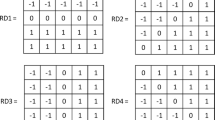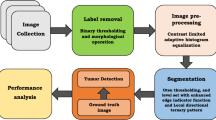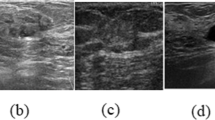Abstract
The goal of this paper is to propose a modified maximally stable extremal region (MSER) based method for the segmentation of ultrasound liver images. Firstly, the feature regions including liver lesions are extracted using the modified MSER detector. Unlike the MSER algorithm, the improved MSER detector merely needs dozens of gray levels rather than 256 possible gray levels ranging from 0 to 255. Next, the edges of the liver lesions are detected from the binary images, and a merging strategy is designed to refine the contour of the liver lesion. The last step is the segmentation of the liver lesion according to the refined contour. The segmentation results of ultrasound liver images demonstrate that there is a significant correlation between the liver lesions selected by a medical expert and the liver lesions segmented by the proposed method. A comparison of the proposed method and other segmented methods shows that the proposed method can detect a more accurate contour of liver lesion images.









Similar content being viewed by others
References
Akbari H, Fei BW (2012) 3D ultrasound image segmentation using wavelet support vector machines. Med Phys 39(6):2972–2984
Chen CM, Lu HS (2000) An adaptive snake model for ultrasound image segmentation: Modified trimmed mean filter, ramp integration and adaptive weighting parameters. Ultrason Imaging 22(4):214–236
Chen CM, Lu HHS, Hsiao AT (2001) A dual-snake model of high penetrability for ultrasound image boundary extraction. Ultrasound Med Biol 27(12):1651–1665
Chen CM, Lu HHS, Huang YS (2002) Cell-based dual snake model: A new approach to extracting highly winding boundaries in the ultrasound images. Ultrasound Med Biol 28(8):1061–1073
Chen MF, Zhu HS, Zhu HJ (2013) Segmentation of liver in ultrasonic image applying local optimal threshold method. Imaging Sci J 61(7):579–591
Ciecholewski M (2014) Automatic liver segmentation from 2D CT images using an approximate contour model. J Signal Process Syst 74(2):151–174
Crespo J, Maojo V (1998) New results on the theory of morphological filters by reconstruction. Pattern Recogn 31(4):419–429
Cvancarova M, Albregtsen F, Brabrand K, Samset E (2005) Segmentation of ultrasound images of liver tumors applying snake algorithms and GVF. Int Congr Ser 1281:218–223
Donoser M, Bischof H (2006) Efficient maximally stable extremal region (MSER) tracking. In Proc. Conf Comput Vis Pattern Recognit
Donoser M, Bischof H (2006) 3D segmentation by maximally stable volumes (MSVs). 18th Int Conf Pattern Recog (ICPR) 1:63–66
Elamvazuthi I, Muhd Zain M, Begam KM (2013) Despecking of ultrasound images of bone fracture using multiple filtering algorithms. Math Comput Model 57(1–2):152–168
Fabbrini L, Greco M, Pinelli G (2014) Improved edge enhancing diffusion filter for speckle-corrupted images. IEEE Geosci Remote Sens Lett 11(1):99–103
Feng X, Shen X, Wang Q, Kim J, Hao Z, et al (2013) Learning based ensemble segmentation of anatomical structures in liver ultrasound image. Proc SPIE 8669, Med Imaging 2013: Image Process, 866947; doi:10.1117/12.2006758
Gui Y, Zhang X, Shang Y (2012) SAR image segmentation using MSER and improved spectral clustering, EURASIP J Adv Signal Process, 83
Häme Y, Pollari M (2011) Semi-automatic liver tumor segmentation with hidden Markov measure field model and non-parametric distribution estimation. Med Image Anal
http://en.wikipedia.org/wiki/S%C3%B8rensen%E2%80%93Dice_coefficient,2014.
Jiang HY, Cheng, QS (2009) Automatic 3D segmentation of CT images based on active contour models. In D. Thalmann, J.J. Shah, Q.S. Peng (Eds.), Proceedings of IEEE international conference on computer-aided design and computer graphics, pp. 540–543
Kotropoulos C, Pitas I (2003) Segmentation of ultrasonic images using support vector machines. Pattern Recogn Lett 24(4–5):715–727
Lee WL, Chen YC, Chen YC, Hsieh KS (2005) Unsupervised segmentation of ultrasonic liver images by multi-resolution fractal feature vector. Inf Sci 175:177–199
Lee M, Cho W et al (2012) Segmentation of interest region in medical volume images using geometric deformable model. Comput Biol Med 42:523–537
Li K, Lu Z, Liu W, Yin J (2012) Cytoplasm and nucleus segmentation in cervical smear images using Radiating GVF Snake. Pattern Recogn 45(4):1255–1264
Li C, Xu C, Gui C, Fox MD (2005) Level Set Evolution Without Re-initialization: A New Variational Formulation, In Proceedings of CVPR’05, vol. 1, pp. 430–436
Liu C, Tsai C, Tsui T, Yu S (2012) An improved GVF snake based breast region extrapolation scheme for digital mammograms. Expert Syst Appl 39(4):4505–4510
Masoumi H, Behrad A, Pourmina M, Roosta A (2012) Automatic liver segmentation in MRI images using an iterative watershed algorithm and artificial neural network. Biomed Signal Process Control 7(5):429–437
Matas J, Chum O, Urban M, Pajdla T (2004) Robust wide baseline stereo from maximally stable extremal regions. Image Vis Comput 22(10):761–767
Milko S, Samset E, Kadir T (2008) Segmentation of the liver in ultrasound: a dynamic texture approach. Int J Comput Assist Radiol Surg 3:143–150
Min ZF, Song EM, Jin RC, Li GK (2009) B-scan ultrasound image feature extraction for quantitative grading of fatty liver severity. J Comput Aided Des Comp Graph 21(6):752–757 (In Chinese)
Moraru L, Moldovanu S, Biswas A (2014) Optimization of breast lesion segmentation in texture feature space approach. Med Eng Phys 36(1):129–135
Nowatschin S, Markert M, Weber S, Lueth TC (2007) A system for analyzing intra-operative B-mode ultrasound scans of the liver. Annu Int Conf IEEE Eng Med Biol, pp: 1346–1349
Ostu N (1978) Discriminate and least square threshold selection. Proc Int Conf Pattern Recog, pp: 592–596
Pan S, Dawant BM (2006) Automatic 3D segmentation of the liver from abdominal CT images: a level-set approach. Proc SPIE 4322:128–138
Perona P, Malik J (1990) Scale-space and edge detection using anisotropic diffusion. IEEE Trans Pattern Anal Mach Intell 12:629–639
Pohle R, Toennies KD (2001) Segmentation of medical images using adaptive region growing. Proc SPIE Med Imaging 4322:1337–1346
Rani N, Thind T (2013) Segmentation of ultrasound images using closest neighbuor approach. Int J Recent Technol Eng 1(6):101–103
Rodtook A, Makhanov S (2013) Multi-feature gradient vector flow snakes for adaptive segmentation of the ultrasound images of breast cancer. J Vis Commun Image R 24:1414–1430
Smeets D, Loeckx D, Stijnen B, Dobbelaer BD, Vandermeulen D, Suetens P (2010) Semi-automatic level set segmentation of liver tumors combining a spiral-scanning technique with supervised fuzzy pixel classification. Med Image Anal 14:13–20
Tian Y, Duan F, Lu K et al (2013) A Flexible 3D Cerebrovascular Extraction from TOF-MRA Images. Neurocomputing 121:392–400
Torbati N, Ayatollahi A, Kermani A (2014) An efficient neural network based method for medical image segmentation. Comput Biol Med 44:76–87
Wu X, Spencer S (2009) etal., Development of an accelerated GVF semi-automatic contouring algorithm for radiotherapy treatment planning. Comput Biol Med 39:650–656
Xu C, Prince JL (1998) Snakes, shapes, and gradient vector flow. IEEE Trans Image Process 7(3):359–369
Acknowledgments
This work was part supported by the National Natural Science Foundation of China under grant No. 61473025, the Fundamental Research Funds for the Central Universities (YS1404), Beijing University of Chemical Technology Interdisciplinary Funds for “Visual Media Computing” and the open-project grant funded by the State Key Laboratory of Synthetical Automation for Process Industry at the Northeastern University in China.
Author information
Authors and Affiliations
Corresponding author
Rights and permissions
About this article
Cite this article
Zhu, H., Sheng, J., Zhang, F. et al. Improved maximally stable extremal regions based method for the segmentation of ultrasonic liver images. Multimed Tools Appl 75, 10979–10997 (2016). https://doi.org/10.1007/s11042-015-2822-z
Received:
Revised:
Accepted:
Published:
Issue Date:
DOI: https://doi.org/10.1007/s11042-015-2822-z




